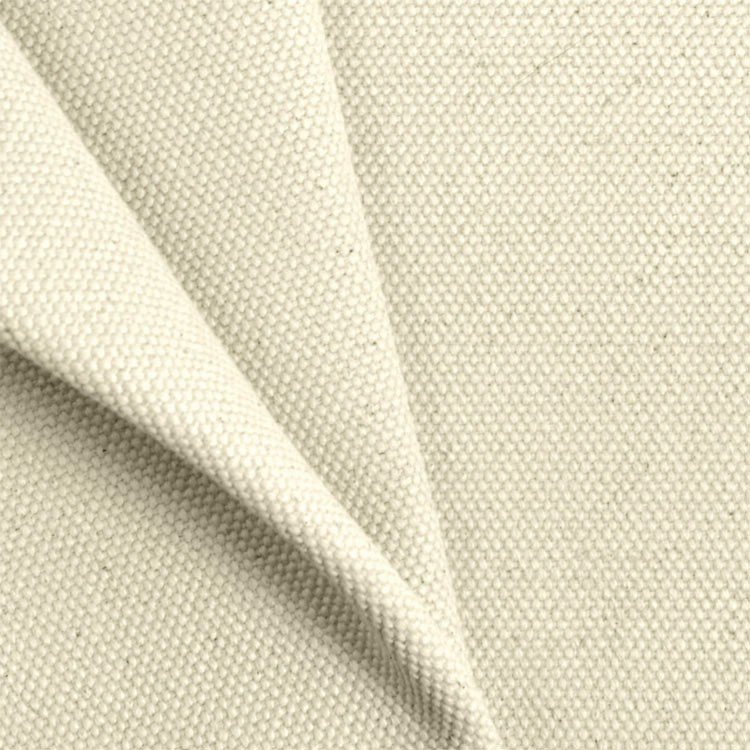What is canvas fabric?
Canvas is a plain-weave, heavy-duty fabric that is commonly desired for its water resistance. Firstly vulgarized as a useful passage cloth material and an excellent oil medium, oil has now made its way into operations as wide as roof material, casual shoes, and developer handbags. Most canvas currently on the market contains cotton fibers, but traditionally, this fabric was made with hemp or linen.
Canvas technical specifications
Featuring thick yarn, the canvas is tightly woven in a simple plain-weave pattern. While this fabric is analogous to denim due to its consistency and continuity, denim features a twill weave.
Due to the consistency of its yarn, the thread count of utmost oil fabrics is low. utmost oil has a thread count of 50 to 100 with advanced thread counts immolating continuity in exchange for a softer texture.
While cotton is presently the most popular oil material, it’s still possible to make this fabric with hemp or linen. Oil is naturally water-resistant, and contemporary forms of artificial oil generally feature polyvinyl chloride( PVC) coating on one or both sides for fresh waterproofing.
History of canvas
Canvas was originally popularized as a painting medium among Venetian Renaissance artists. Venice was the epicenter of the Italian Renaissance, and painters in this watery city struggled to create works of art on frescos and wood panels due to the high ambient humidity.
Long before it came into fashionability as an oil medium, the oil had been the dereliction material for making sailcloth for glories. The further we go back in history, the looser the description of “ oil ” becomes, but indeed the most rudimentary Ancient Egyptian cruises bear a close resemblance to ultramodern oil sailcloth.
Since Venice was formerly the center of the Italian maritime assiduity, Renaissance painters had little trouble repurposing oil sailcloth for the purpose of fine art. Back in those days, still, hemp was the primary material used to make oil, and it remained the most popular oil fiber for quite some time.
In fact, chroniclers believe that the word “ oil ” comes from either the Greek or Latin word for “ cannabis. ” With the blossoming of the Indian cotton trade that began in the 17th century, European hemp products declined, but the very name of oil fabric remains a fascinating memorial of this cloth’s hempy origins.
Canvas today
While wood panels tended to underpin and crack, oils on oil displayed remarkable resistance to time and the rudiments, and oil soon came the most popular oil medium throughout Europe. All of the late Renaissance period’s most important paintings were painted on canvas, and canvas remains a popular painting medium to this day.
Throughout the centuries, oil noway lost its fashionability as a sailcloth material. While ultramodern cruises occasionally feature synthetic filaments, cotton and linen oil remain popular choices for sailcloth. Canvas gradationally made its way into other out-of-door-acquainted operations, and for centuries, it was the most popular material for canopies and other forms of temporary harbors.
At some point, oil started making its mark in the arena of fashion accessories and vesture. moment, it’s as common to find precious developer handbags that incorporate oil as it's to find oil-surface cold wave-rainfall work gear. Despite the cornucopia of synthetic accouterments now available, most types of oil used in vesture remain cotton-grounded.
The process used to make oil fabric differs depending on the fabric’s willed purpose. Oil fabric intended for oil goes through fresh post-production processes. Despite the fact that cloth manufacturers can make oil from cotton, linen, or hemp, each of these filaments has analogous attributes, so the introductory product processes used to make oil remain the same anyhow of the named fiber.
Finishes
Still, a subcaste of PVC is frequently applied to its external face, If woven oil will be used for artificial operations. This step is voluntary, still, and each-natural forms of oil live that doesn't feature PVC or any other synthetic chemicals.
If intended for painting, textile manufacturers will bleach the finished canvas and apply a layer of gesso. The canvas used for sails is usually unbleached, and canvas used for tents, apparel, and other purposes may be dyed.
Painting canvas processes
Still, it's stretched around a rustic frame before gesso is applied, If oil will be used for oil. This stretching process ensures that the oil forms an impeccably tense and flat oil face. Expert oil stretching also ensures that the underpinning and weft vestments in the oil form a perfect grid.
In the ultramodern period, oil is primarily produced for oil accouterments. While some windjammers still feature oil cruises, windjammers aren't veritably popular in this period, and numerous ultramodern mariners have replaced their oil cruises with synthetic druthers.


